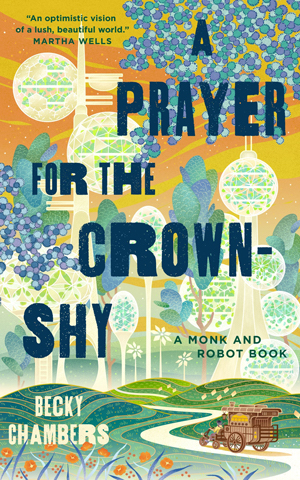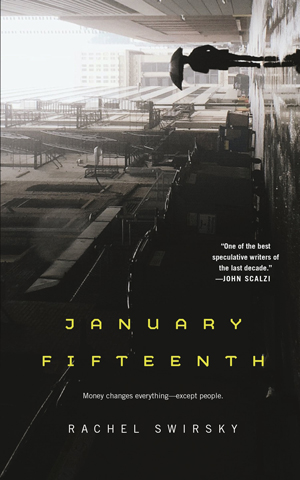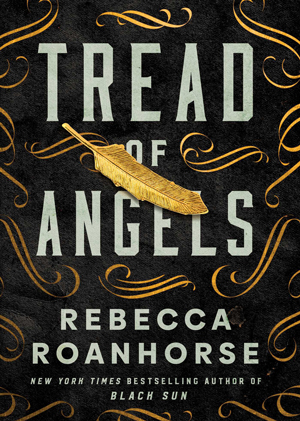Ecologists used to believe that the systems they studied tended toward balance. Over the course of the 20th century, though, they realized that disturbance is not a detour but a destination. Humans can do terrible harm to ecosystems, of course, but disturbance itself is not necessarily a problem; in most ecosystems, the only steady state is a state of upheaval. Relationships between and among species, while indispensable and often enduring, are in constant flux, subject to small and large disruptions. The vaunted “balance of nature” is more or less a mirage.
Science fiction writers and filmmakers seem to have reached a similar understanding. The dystopias and occasional utopias of classic science fiction are akin to what ecologists used to call climax communities — mature forests and other ecosystems believed to be stable until upended by an external force, with the external force in science fiction being your trusty lone hero. Perhaps because these either-or futures exist beyond the “final frontiers” of known space and time, they are often set in imagined Wests: Science fiction and its variants have sent the frontier myth to space (Star Trek, among many others), turned the Pacific Northwest into an insular splinter state (Ecotopia), and sentenced Los Angeles to any number of high-decibel
catastrophes.
While technology may solve some problems, it can’t transform human behavior, and it certainly can’t fix the relationships between humans and habitats, or between humans and other species.
Later in the 20th century, some writers — including many living and working in the West — began to build more complex, less certain, and consequently more plausible futures. “Must redefine utopia,” frets recluse Tom Barnard in Kim Stanley Robinson’s Orange County trilogy, published in the 1980s and ’90s. “It isn’t the perfect end-product of our wishes, (but) … the process of making a better world, the name for one path history can take, a dynamic, tumultuous, agonizing process, with no end.” The fiercely imaginative Octavia Butler, who, like Robinson, grew up in Los Angeles, set her prescient Parables series, published in the 1990s, in a California where violence is always present but never predictable. Lauren Oya Olamina, the flawed spiritual leader at the center of the series, preaches that “The only lasting truth / Is Change” — a creed that could have been written by an ecologist.
In Butler’s wake, writers such as Claire Vaye Watkins and Joy Williams have set novels in future Western landscapes, within societies that are fundamentally broken yet continue to evolve. And today, a new generation of Western science fiction writers is exploring possible paths to better worlds. Portland author Rachel Swirsky, in her near-future novel January Fifteenth, has imagined the individual and societal consequences of a universal basic-income payment. The novella Tread of Angels, by New Mexico author Rebecca Roanhorse, uses its fantastical setting in an alternative-history 19th century mining town to upset the predictable battle between good and evil, asking whether anyone truly belongs on one side or another.
Tread of Angels
Rebecca Roanhorse, Gallery/Saga Press, 2022

A Prayer for the Crown-Shy Becky Chambers, Tordotcom, 2022

January Fifteenth
Rachel Swirsky, Tordotcom, 2022
Writer Becky Chambers, who grew up in Southern California and now lives in Humboldt County, is known for her outer-space adventure novels, but her latest series, Monk and Robot, is set in a society whose members have survived an excruciating transition from what they describe as the “Factory Age.” They aspire to live less destructively than their forebears, and in many ways they do: Their transportation methods are human-powered, their plastics are biodegradable, and their rivers and forests are recovering from past harms. Like some fortunate Californians, they live in diverse communities; their gender identities are accepted without question, and their vegetables are abundant and fresh. They also drink a lot of tea, sometimes for therapeutic purposes, and they speak fluently about their feelings. Yet this gentle society is no traditional utopia; its members are actively experimenting with different ways of living and working together, and they are dealing with the ongoing consequences of their past. In A Prayer for the Crown-Shy, the second novella in the series, the robot Mosscap revisits human society after a long estrangement between humans and robots — making connections that, while largely joyful, reawaken a painful history.
In science fiction’s ever-expanding universe of subgenres, Chambers is considered a practitioner of “hopepunk,” a label she embraces. “You’re looking at the world exactly as it is, with all of its grimness and all of its tragedy, and you say, ‘No, I believe this can be better,’” she said in an interview last year. “That to me is punk as hell.” Like Robinson’s Tom Barnard, Chambers and writers like her are suspicious of utopias, instead placing their faith in the ongoing possibility of change. “Hopepunk isn’t pristine and spotless,” writes fantasy author Alexandra Rowland, who coined the term. “Hopepunk is grubby, because that’s what happens when you fight.”
These stories about instability and possibility are not prescriptions. They’re experiments that test out new technologies and social innovations by imagining the variety of human reactions to them — reactions that are surprising, entertaining and ultimately familiar, no matter how unearthly the setting or extraordinary the circumstances. If ecology has taught science fiction about the constancy of change, perhaps science fiction can remind conservation that lasting societal change can only be brought about by people. While technology may solve some problems, it can’t transform human behavior, and it certainly can’t fix the relationships between humans and habitats, or between humans and other species. In any future, that work — that dynamic, tumultuous, agonizing process — is up to us.
This review first appeared at High Country News and is republished here with permission. Top photo: Linda Pomerantz

